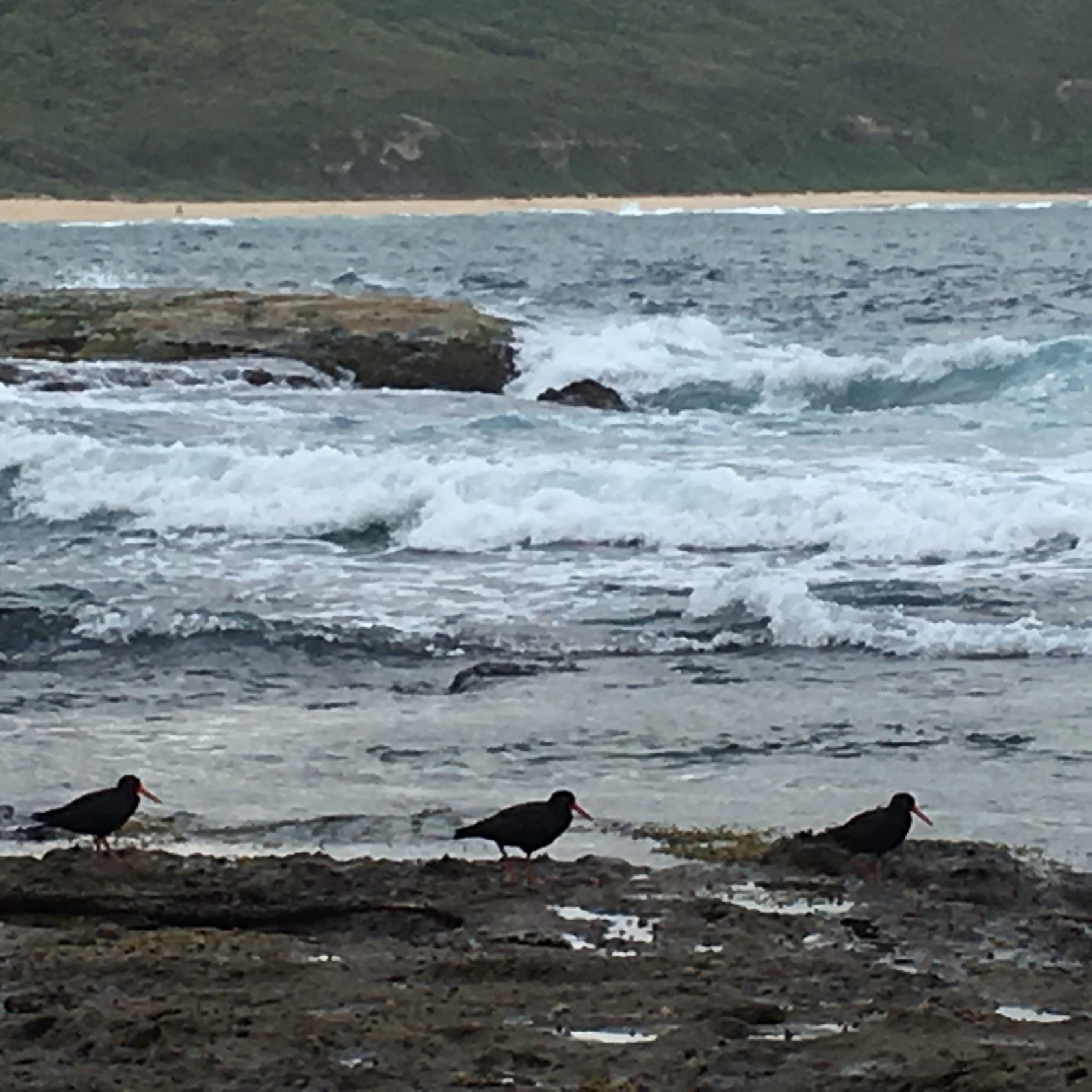
One of my favourite local birds that can often be sighted on the rock platforms of our coastline in the Hunter region is the Sooty Oystercatcher (Haematopus fuliginosus). It is a wading bird endemic to Australia and occupies the coastal zone including rocky shores and estuaries usually within 50m of the shoreline. Keep an eye out this summer around the rocks at your favourite beach!
A striking and sturdy medium sized bird (42 – 52cm) it is jet black with red eyes, red eye rings, a long red bill and reddish to pink legs – it is hard to miss. I snapped the following photo of a small family group of Sooty’s fossicking for food on a recent walk to south Dudley Beach and decided to pass on some facts about their biology.
Sooty Oystercatchers forage in the intertidal zone for the two hours either side of low tide. A study completed in 2012 by Lucy Alpin and Andrew Cockburn found that there was an interesting difference in preferred prey items between male and female Sooty’s. According to this study, female Sooty Oystercatchers prefer soft bodied prey such as fish, crabs, bluebottles (YES!), cunjevoi and worms while males prefer hard shelled prey such as sea urchins, turban shells and black periwinkles.
Sooty’s usually breed during the spring/summer months (August – January) on off-shore islands or more isolated coastal headlands. Pairs exhibit high site and mate fidelity. They lay a clutch of between two to four eggs in either rock crevices or on a high ledge where parent birds can keep watch. Eggs can also be deposited in a small hollow on the beach or rocky shore where they are vulnerable to being trampled by people or eaten by raptors, feral animals and unrestrained domestic pets.
Sooty Oystercatchers are listed as Vulnerable in NSW which is not surprising given the mass food gathering of gastropods and molluscs that has taken place on the rocky shores in our local region and particularly the greater Sydney metropolitan region, over the past 20 years. This mass harvesting of our shorelines continues relatively unchecked today.
Even in areas like Dudley Beach which is located within Glenrock State Conservation Area managed by National Parks and Wildlife Service, it is almost impossible to find living oysters, sea urchins and some other bivalve species on the rock platforms due to human exploitation.

Sooty Oystercatchers at south Dudley Beach January 2017 – T. Cameron
It is up to all of us to keep an eye out for illegal harvesting of molluscs, gastropods, bivalves and cephalopods (octopus, cuttlefish, squid etc.) on our rocky shores and report this activity to the authorities, otherwise populations of prey species such as the Sooty Oystercatcher will continue to decline.
Trevor Cameron
Director
Eikos Environment and Heritage
Newcastle Australia
www.eikos.com.au
References:
Birdlife Australia – www.birdlife.org.au
NPWS – www.engage.environment.nsew.gov.au
NPWS – www.nationalparks.nsw.gov.au
Alpin, L and Cockburn A (2012) “Ecological Selection and Sexual Dimorphism in the Sooty Oystercatcher, Haematopus fuliginosus” Austral Ecology 37 (2) 248 – 57
